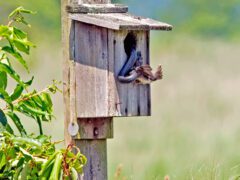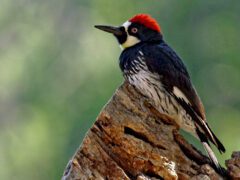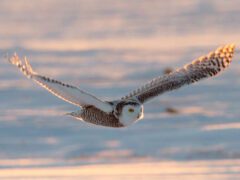The Four Keys to ID
- Size & Shape
A sturdy, medium-sized shorebird with a heavy bill for a plover. It has fairly long legs, large eyes, and a rather large head.
Relative Size
Larger than a Semipalmated Plover, smaller than a Killdeer.

 between sparrow and robin
between sparrow and robinMeasurements
- Both Sexes
- Length: 6.3-7.9 in (16-20 cm)
- Weight: 1.9-2.5 oz (55-70 g)
© Ian Davies / Macaulay Library
- Color Pattern
Breeding adults are medium brown above, white below, with a single breast band that is blackish (males) or brownish (females). Above this is a white partial collar, and a white stripe over the eye that extends to the bill. Some males show a little cinnamon color in the rear of the face. Nonbreeding males are more like females, as the black in the plumage is replaced by brown. Juveniles are similar to nonbreeding adults but are paler and more scaly looking.
© Chris Wood / Macaulay Library - Behavior
Wilson’s Plovers hunt mainly fiddler crabs both day and night. They watch for prey and then running after them and lunge, extracting the prey with the strong bill. They often shake crabs to remove the legs. They may forage in loose flocks composed of several families.
- Habitat
Nests on sandy, shelly, or gravelly beaches above high tide line. Forages largely on mudflats, where fiddler crabs are the chief prey, and occasionally in sandy habitats, impoundments, and salt flats.
© Adam Hull / Macaulay Library
Regional Differences
Ornithologists recognize four subspecies, which differ in head pattern, breast band, and color of upperparts. The subspecies wilsonia is the only one that breeds in the United States; it also occurs south to Belize and into the Caribbean. The more rufous-tinted cinnamominus inhabits the southern Caribbean, while the heavy-billed crassirostris is resident in Brazil. Along Pacific shores from Mexico to Peru, beldingi is the breeding subspecies, similar to cinnamominus but with a different head pattern and broader breast band.












